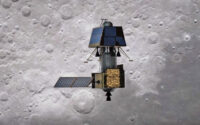Chandrayaan-3: India’s Resilient Pursuit of Lunar Exploration
Introduction
India’s pursuit of lunar exploration has been nothing short of remarkable. Following the successes of Chandrayaan-1 and Chandrayaan-2, the Indian Space Research Organisation (ISRO) embarked on yet another ambitious lunar mission, Chandrayaan-3. This mission, announced in 2021, reaffirms India’s commitment to unraveling the mysteries of the moon and represents the nation’s resilient spirit in the face of challenges. In this article, we explore the objectives, significance, and implications of Chandrayaan-3.
The Genesis of Chandrayaan-3
Chandrayaan-3 is the third installment in India’s lunar exploration program. It was conceptualized as a response to the challenges faced during the landing phase of Chandrayaan-2 when the Vikram lander lost communication with mission control and crash-landed on the moon’s surface. Chandrayaan-3’s primary objective is to achieve a successful lunar landing, building upon the lessons learned from its predecessors.
Objectives of Chandrayaan-3
- Successful Lunar Landing: The primary goal of Chandrayaan-3 is to achieve a successful soft landing on the moon, demonstrating India’s capability to execute precise lunar landings.
- Improved Technology: Chandrayaan-3 will utilize advanced technology and lessons from Chandrayaan-2 to enhance the reliability of the landing system.
- Scientific Exploration: While Chandrayaan-3’s primary focus is on the landing, it will also carry scientific instruments to study the lunar surface and transmit valuable data back to Earth.
Chandrayaan-3’s Technology and Instruments
Chandrayaan-3’s technology builds upon the expertise gained from Chandrayaan-2, incorporating improvements to the landing system and communication equipment. While the mission’s primary objective is to successfully land on the moon, it will also carry scientific payloads that can contribute to lunar science.
Chandrayaan-3’s Journey and Challenges
The mission will follow a similar launch profile to Chandrayaan-2, utilizing the GSLV Mk III-M1 rocket to carry the spacecraft to the moon. While the technical challenges of lunar landings are formidable, Chandrayaan-3 benefits from the experience and knowledge gained from its predecessors.
The mission’s success will depend on the reliability and precision of the landing system, including the lander and rover. ISRO’s engineers and scientists have meticulously analyzed the shortcomings of Chandrayaan-2’s landing attempt and are working diligently to overcome them.
Legacy and Implications
Chandrayaan-3 carries significant implications for India’s space program and lunar exploration efforts. A successful lunar landing would not only enhance India’s standing in the global space community but also open up opportunities for further scientific exploration and potentially pave the way for future lunar missions, including human exploration.
Additionally, Chandrayaan-3 serves as a testament to ISRO’s resilience and determination. Despite the challenges faced during Chandrayaan-2’s landing attempt, India remains committed to advancing its space technology and capabilities.
Conclusion
Chandrayaan-3 represents India’s unwavering commitment to lunar exploration and its determination to overcome challenges in the quest for scientific knowledge and technological excellence. While the mission’s primary goal is to achieve a successful lunar landing, its broader implications extend to the growth of India’s space program and its contributions to global space exploration. As Chandrayaan-3 embarks on its journey to the moon, it carries with it the hopes and aspirations of a nation eager to explore new frontiers in the cosmos.


